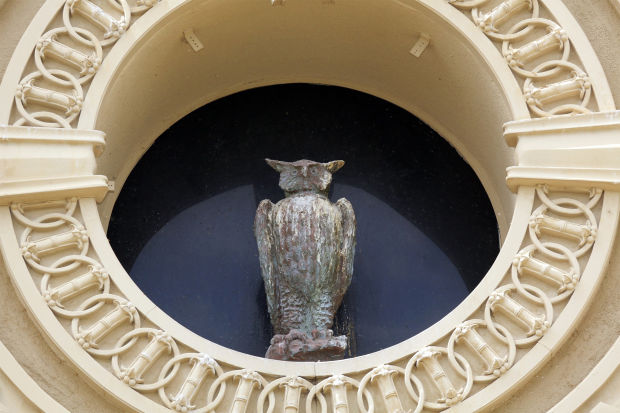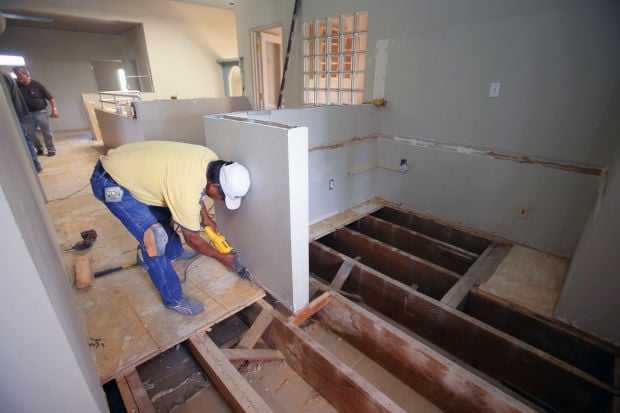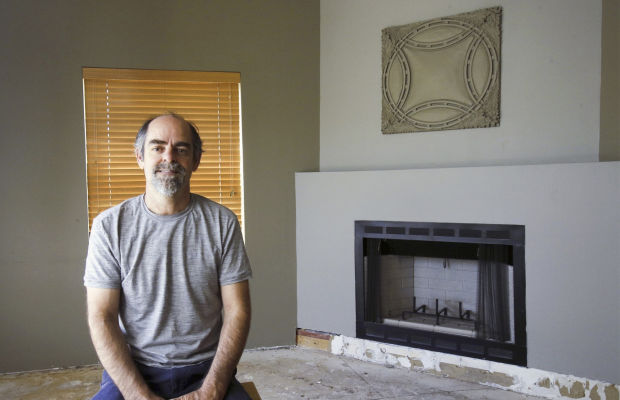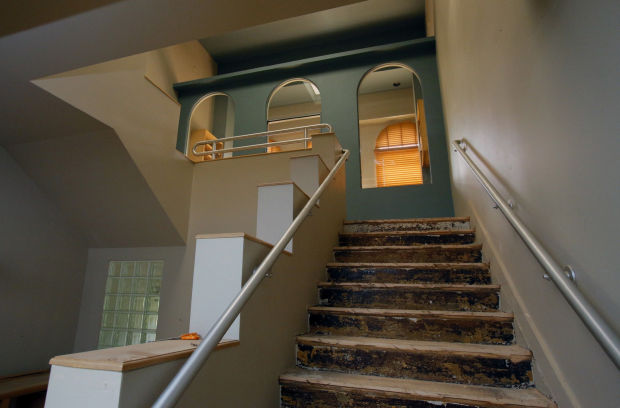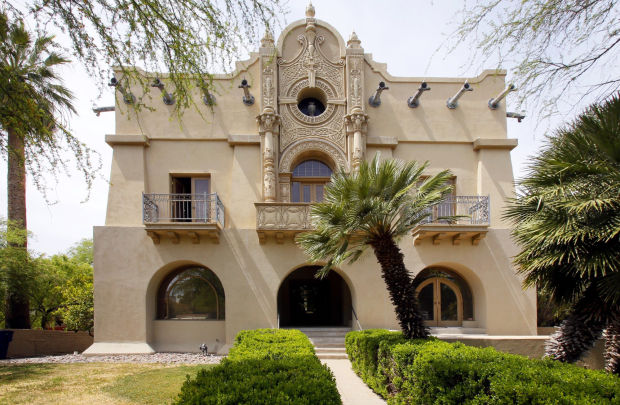A national environmental group that has spent a quarter-century trying to save imperiled owls will soon call home a historic Tucson building that was named for owls.
The Tucson-based Center for Biological Diversity plans to move into the 112-year-old Owls Club mansion downtown in June, after buying it for $1.3 million.
The group’s current headquarters are in a much smaller warehouselike structure, along North Oracle Road about a mile north of downtown.
The ornate Owls Club building at 378 N. Main Ave. lies amid other stately old homes and offices in the historic El Presidio neighborhood, where it was built to house a club of bachelors who called themselves owls because they wanted to “nest” while waiting to find brides.
The purchase culminates the Center for Biological Diversity’s long-term transition into a nationally prominent group from its roots as a small band of activists working out of their homes — or living in office space — in Southwest New Mexico in the late 1980s and early 1990s.
Today, despite the group’s prominence and controversy due to its aggressive and often successful environmentalism, its office is so cramped that Executive Director Kieran Suckling works out of an Airstream trailer outside.
So the group has paid cash to buy the Owls Club building from a partnership run by developer and real estate broker Michael Carlier and engineering consultant Raúl Piña.
The reason for their willingness to sell is that while the Center for Biological Diversity’s Tucson staff has grown, the developer and consultant’s staffs have shrunk due to the 2007-08 real estate crash and ensuing recession. The purchase price was about the same as Piña and Carlier paid for the building in 2005.
The two-story building, a converted home that underwent a top-to-bottom renovation in 1985, remains structurally sound, Suckling said.
Designed by pioneer Tucson architect Henry Trost, it’s adorned with numerous arched windows, balconies, turrets and canales. Up high is an owl sculpture, surrounded by a plaster-cast frieze of interlocking circles.
The center will spend less than $200,000 on renovation, including installing new wood flooring on top of aging plywood flooring and replacing “grungy, toxic carpet,” Suckling said. The group will install new air conditioning and a “cutting-edge, high-tech communications system” to bring the building up to contemporary standards for Internet lines and servers, Suckling said.
fame and infamy
The center’s efforts to save two owl species during the late 1980s and into the 1990s gave the group much of its early fame — and to critics, infamy. The Mexican spotted owl and the cactus ferruginous pygmy owl are among about 500 species for which the group says it has secured federal protection using petitions and litigation.
Suckling and Peter Galvin, another of the group’s founders, had previously worked as Mexican spotted owl surveyors in New Mexico for the U.S. Forest Service. The group’s original name was Friends of the Owl, Suckling recalled last week.
The center’s Mexican spotted owl-saving efforts are generally regarded as an environmental success, curtailing logging in much of the prime owl habitat in the Southwest.
The pygmy owl effort had mixed results. In that owl’s nine years as an endangered species, the federal government forced homebuilders to set aside hundreds if not thousands of acres of Sonoran Desert owl habitat on Tucson’s then-booming Northwest Side. But the U.S. Fish and Wildlife Service ultimately took the owl off the endangered species list in 2006, after homebuilders’ litigation overturned the listing decision.
The center is now in court trying to get the pygmy owl relisted. It has fought to protect a half-dozen other owl species, including the California and northern spotted owls, the burrowing owl and the short-eared owl.
“We’re going to have a museum of the owl in one of our rooms here,” Suckling said. “We’ve collected an enormous amount of owl kitsch that we have in storage, like an owl dinner plate from the 1930s, an owl necklace and an owl-shaped telephone.”
Giving up free rent
Leaving behind the current headquarters is hard because rent was free there, Suckling said. But besides its smaller space, an arrangement that required staffers to vacate that building and work at home for a month during Tucson’s winter Gem, Mineral and Fossil Showcase was “too disruptive for a group of this size,” Suckling said.
The North Oracle Road building’s previous owner, Roy Young, gave it to the center in December 2012, but his lease to use it for the gem show runs 10 years, Suckling said. In March, the center sold that building to another party for $350,000, helping to defray the cost of buying the Owls building.
Ike Isaacson, the real estate broker who represented the center, said the Owls Club building purchase wasn’t difficult to negotiate, taking about three months.
“I think it’s a great home for them,” said Isaacson, managing director for the firm CBRE Tucson. “They will be able to use the entire building and its exterior amenities for fundraising events. It has onsite parking and room to grow. For an environmental group to locate downtown, that’s good, too.”
The center’s investment will help the burgeoning downtown area, added Buzz Isaacson, Ike’s father, a longtime commercial real estate broker who regularly deals in downtown property.
“New owners, they spend money on the building, updating it, taking care of stuff, That’s a good indicator for downtown — that there’s a market, that there’s people who want to be downtown,” said Buzz Isaacson.
The group was drawn to this new headquarters by its beauty, size, its near-readiness for occupancy and its location, said Suckling. “We knew we wanted to move downtown and be part of its renewal, and be able to walk and bike to restaurants.”
The previous owners, Piña and Carlier, had shrunk their staffs from a total of more than 40 employees before the real estate crash to 12 to 15, the two said in interviews last week. The center’s Tucson staff has grown from eight in the late 1990s to 25 today.
Three years ago, the building went into foreclosure proceedings after the owners fell behind on loan payments. They avoided losing the building by restructuring their debt, Piña said.
After leaving the Owls Club building, Piña moved his business to a 3,000-square-foot space near Prince Road and Interstate 10. Carlier now operates his business at offices at Campbell Avenue and Skyline Drive.
Opposite sides
Not surprisingly, the Owls Club’s building’s buyer and sellers have stood on opposite sides in Tucson’s environmental conflicts, with the center having fought more than one development on the Northwest Side, where Carlier has often worked.
The center also opposes the Rosemont Mine, with which Piña has a relationship. He is a consulting engineer for a pipeline project that the mine’s owner plans to pay for to recharge Central Arizona Project water.
“It’s a small world. ... The owl is a symbol for them. They’ll take better care of the building than I could,” Piña said. “They’ve got more finances than I do. At least the people I got to meet were nice guys.”
Suckling sees no irony in having purchased the building from what some would consider natural adversaries.
“Those guys were not speculating,” Suckling said. “They got in there and tried to operate. All that money was mortgaged for something. It was just a disaster for them.”
Given the amicable sale negotiations, maybe the next time Carlier pursues a zoning change on land that the center considers environmentally sensitive, “we’ll sit down at the table and work out some issues that might work for them,” the developer said. “Maybe we’ll have an entree, as opposed to being adversaries.”


